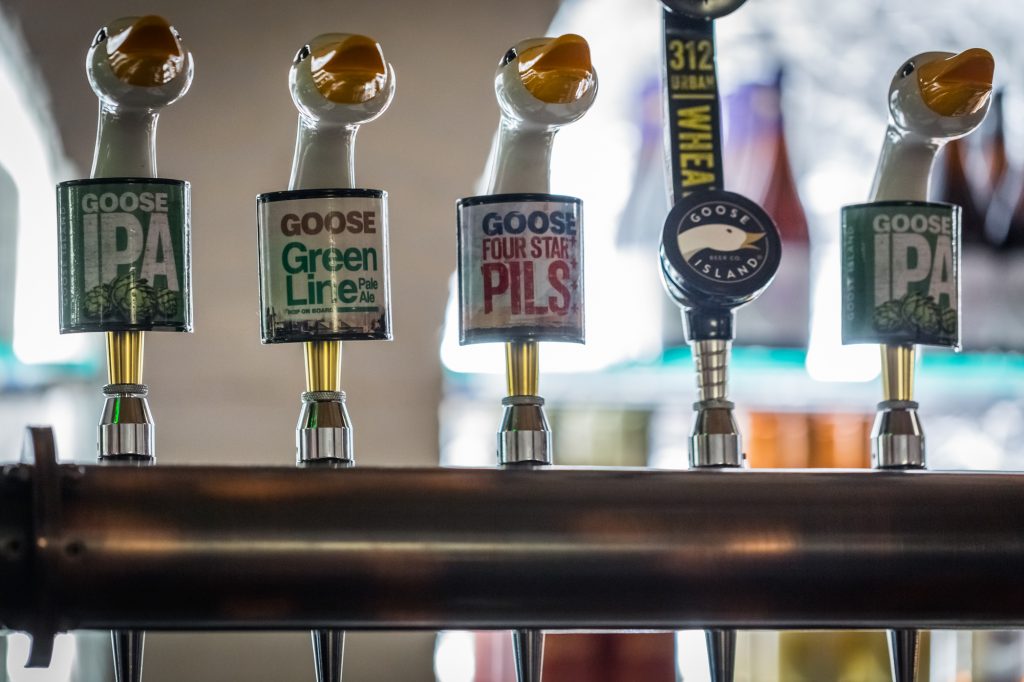by John Porter
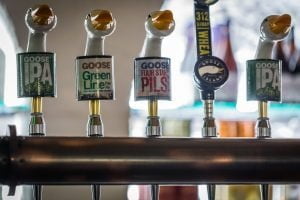 Balham is, as Peter Sellers famously observed, the “gateway to the south”, but it was, a little disappointingly, not the late Goon’s sketch that bought Chicago brewer Goose Island from its home in the cradle of urban blues music to the dubious glamour of South London.
Balham is, as Peter Sellers famously observed, the “gateway to the south”, but it was, a little disappointingly, not the late Goon’s sketch that bought Chicago brewer Goose Island from its home in the cradle of urban blues music to the dubious glamour of South London.
If John Lee Hooker ordered his usual ‘One Scotch, One Bourbon and One Beer’ at the Goose Island Vintage Ale House in Balham, the beer on offer would be from the Goose Island range back in Chicago in his adopted city.
These are, I admit, two completely different introductory paragraphs. I’m equally fond of them both, but I’m going to struggle to link them, so take your pick.
To business. In December 2016, the Goose Island Vintage Ale House opened in perhaps unexpected location of Ramsden Road in Balham. Marking the first pub venture for Goose Island outside the Americas, as might be expected the Vintage Ale House serves the brewers core range on draught including Goose Island IPA, Green Line Ale, and Four Star Pils.
More interestingly, also on offer – when available – is the legendary Bourbon County Stout, as well as the seven-strong range of barrel-aged Belgian style beers, dubbed the ‘seven sisters’. These Belgian-inspired beers are aged for 18 months in wine barrels, each with 50lbs of a different fruit added. Each is sold in 70cl champagne-style bottles, and bottle conditioned with a five-year shelf life. The range includes Gillian, named for X-Files actor Gillian Anderson, who once worked at the Goose Island brewpub. Bottled at 9.5% ABV, this farmhouse ale is blended with white pepper, strawberry, and honey.
Other sisters include pale ale Matilda, a 7% ABV farmhouse ale fermented with wild yeast, Sofie, a 6.5% pale ales aged with orange peel, and Madame Rose, a 6.7% ABV brown ale made with wild yeast and aged with cherries.
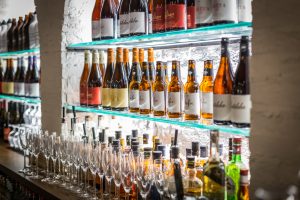 At the Vintage Ale House, a bottle of one of these beers will set you back somewhere from £18 and £25, and come with suggested food matches rom a bistro-style menu that includes Porter & Molasses Glazed Beef Cheeks or the Roasted Cod and Seafood Fregola.
At the Vintage Ale House, a bottle of one of these beers will set you back somewhere from £18 and £25, and come with suggested food matches rom a bistro-style menu that includes Porter & Molasses Glazed Beef Cheeks or the Roasted Cod and Seafood Fregola.
If that strikes you as a challenging sell to the standard Balham punter, I initially agreed with you. As a native south Londoner who went to primary school a stone’s throw from the location of the Vintage Ale House – if you can throw a stone half a mile -I’d be the last to disparage the area, but even so…
Fortunately, I had the very good luck to be invited to a dinner hosted by Goose Island founder John Hall and president Ken Stout and had the opportunity to ask a few searching questions.
To start, with, why Balham? Although acknowledging that they left the exact choice of location to someone with more local knowledge, John told me: “I spent time in London, and enjoyed the pub scene, way before I opened Goose island. I also spent time in other parts of Europe, and wondered why we didn’t have the same atmosphere and beers in the States.
“The biggest influence on what I did, of any one thing, was Fuller’s. So, I opened a brewpub, and we sold beers of the world, put probably more than anything we sold English style ales, hand pulled.
When the opportunity came to expand, we thought why not go back to London. We’ve had our beers over here since 2002/2003, and over the years as craft beer has become more popular, we’ve done well. London’s huge, and we wanted to find a neighbourhood where we could fit in and establish ourselves, we wanted to be part of a community. That’s part of what we are.”
Ken points out that “when John started the original brewpubs in Clybourn Avenue in 1988, it was a seedy area – there were ladies of the night, and it wasn’t necessarily the safest part of Chicago. Greg, John’s son, would walk down the middle of the street to get to the pub – he didn’t want to be on the sidewalk, he wanted to be under lights. But since then that neighbourhood has become a gem.”
I mention that Balham has been through similar changes of its own, for example with gentrification among having seen the once-notorious Bedford Hill tone down its act considerably. Ken said: “I’m not saying we’re her to save Balham. But we’ve been part of the resurgence of the community in Chicago, and we’d love to be part of the resurgence that’s happening in Balham.”
So, what about the audience for those premium beers? John says: “In the States, we really pioneered brewing wine-like beers. When we bought out Matilda and Sofie, we were nervous originally, and we underpriced them, which hurt us little bit. But today, you’ve got beers out there that aren’t as good, that are priced higher.
“We have a selection of our beers here that are as worthy as any wine to go with a great meal. This is where we show people how to do that, show them how proud we are of these beers.”
Ken elaborates: “We’re trying to be part of the elevation of beer. These beers are for the developed palate. They’re influenced by the Belgian tradition but they’re very dry, there is no residual sugar. They’re for a palate that doesn’t want sweet and cloying, they’re tart and dry.”
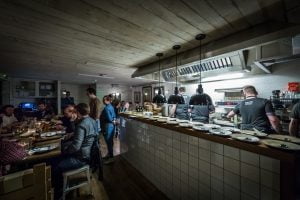 While walk-in trade will enjoy the draught offer, John expects the vintage beers, paired with food, to attract a destination trade – “it’s going to be word of mouth.” The focus is on staff who understand the beers, along with the presentation, including bespoke stemmed glassware.
While walk-in trade will enjoy the draught offer, John expects the vintage beers, paired with food, to attract a destination trade – “it’s going to be word of mouth.” The focus is on staff who understand the beers, along with the presentation, including bespoke stemmed glassware.
Ken says: “Our square footage isn’t huge here, but It’s not just about the number of people who come through the door, it’s finding the right people, those who really appreciate the experience. They become ambassadors without even knowing it, they tell their friends.”
The Balham opening has been made possible, at least in part by the investment in Goose Island by the world’s biggest brewer. AB InBev, which acquired Goose Island in 2011. Ken explains: “Since our partnership with AB InBev began in 2011 we’ve grown almost five times over in terms of volume, just in the US. Any expansion projects, like the Vintage Ale House in Balham, don’t happen if we’re not succeeding as an individual business unit.”
John says: “I made the decision to sell because they told me, and I believed them, that they were buying us for what we could contribute. Ken, who I hired many years ago, is now president and running the company, and I couldn’t be prouder, I love the beer, but I love the people even more.”
As for the prospects of further Vintage Ale Houses, Ken acknowledges: “If it works really well we’re going to want to do it in other great cities that have a beer culture. So Brussels would make a lot of sense, Paris would make a lot of sense, so would Rome and Milan.
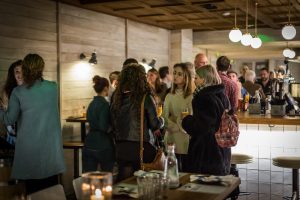 And taking the concept back to the USA? Ken says: “We don’t really have an answer, we don’t know yet. We’re going to tend this garden and see what works. What can we do back home in Chicago potentially with something like this? It’s exciting to think about.” John sums up: “I’ll be disappointed if we don’t.”
And taking the concept back to the USA? Ken says: “We don’t really have an answer, we don’t know yet. We’re going to tend this garden and see what works. What can we do back home in Chicago potentially with something like this? It’s exciting to think about.” John sums up: “I’ll be disappointed if we don’t.”
